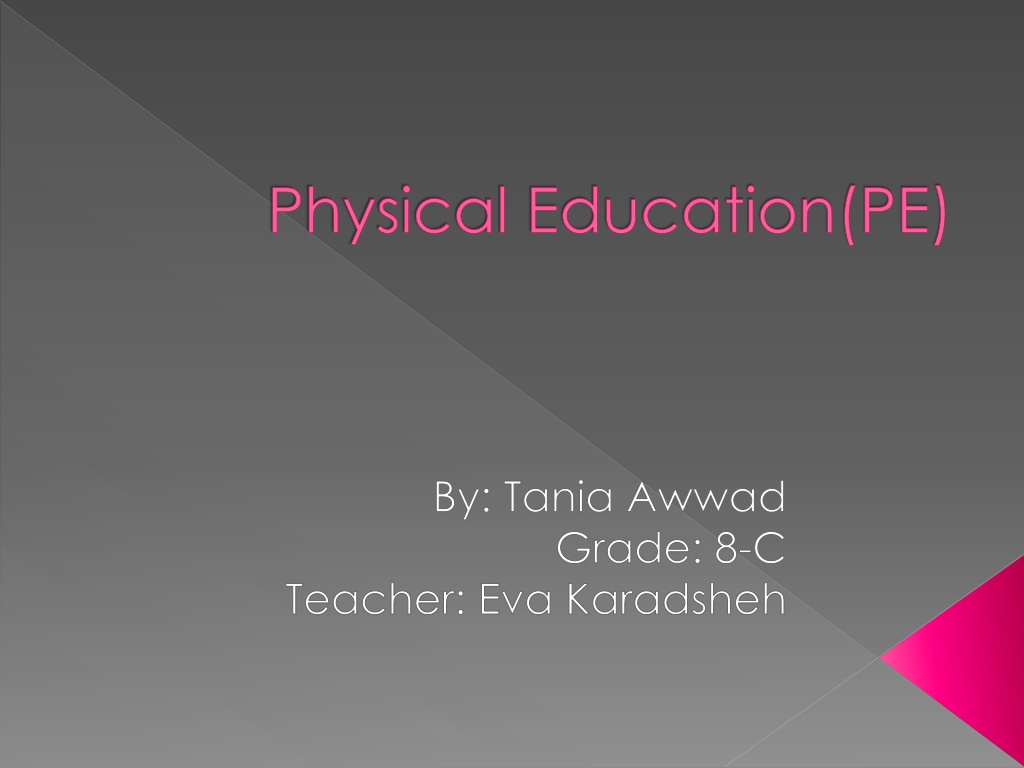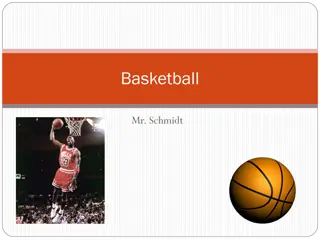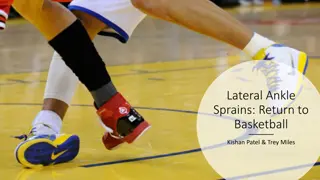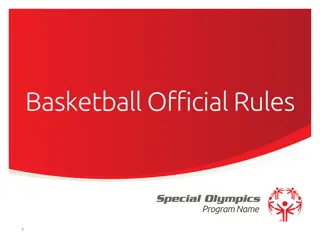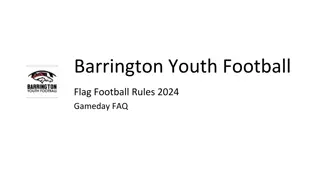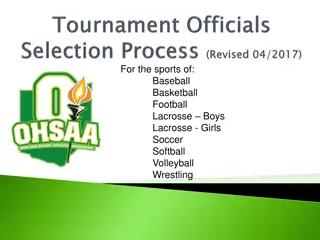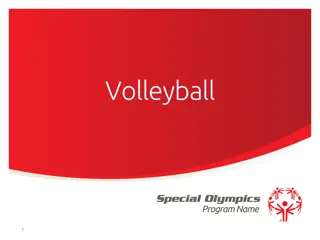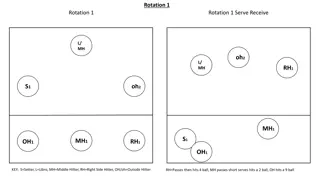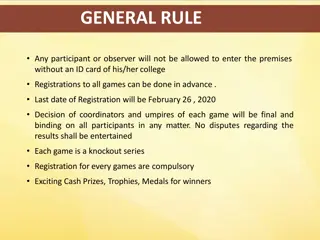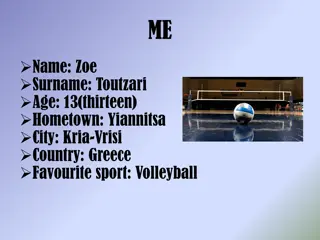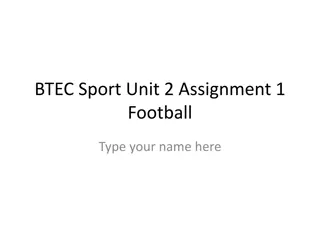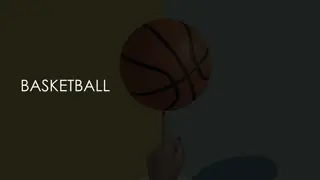Understanding Physical Education: Sports and Rules in Volleyball, Basketball, and Football
Physical Education (PE) is an essential class in schools that focuses on sports and exercise to enhance health and skills. This content covers the basics of PE, including volleyball court dimensions, volleyball rules, positions in volleyball, basketball court dimensions, basketball rules, positions in basketball, and football positions.
Download Presentation

Please find below an Image/Link to download the presentation.
The content on the website is provided AS IS for your information and personal use only. It may not be sold, licensed, or shared on other websites without obtaining consent from the author. Download presentation by click this link. If you encounter any issues during the download, it is possible that the publisher has removed the file from their server.
E N D
Presentation Transcript
Physical Education(PE) By: Tania Awwad Grade: 8-C Teacher: Eva Karadsheh
What is PE? PE is a class that most schools provide for students. It s a class where students play sports, and exercise, to improve health and skills. In NOS, teachers provide students with various options and they are: Basket ball, Football, badminton, and volleyball.
Volleyball court The playing court is 18m long and 9m wide and is surrounded by a free zone 3m wide on all sides. The space above the playing area is known as the free playing space and is a minimum of 7m high from the playing surface.
Volleyball rules In volleyball, there are 2 teams with 6 players each. 3 players on the back row, and 3 players on the front row. You can hit the ball 3 times on each side. A player cannot hit the ball more than once in a row. If the ball hits the boundary line it s considered In . After the serve, front line players may switch positions at the net.
Volleyball positions The seven positions in volleyball are outside hitter, opposite, setter, middle blocker, libero, defensive specialist, and serving specialist.
Basketball court The typical basketball court dimensions for a standard sized full court used in NBA professional basketball and college play is 94 feet long by 50 feet wide.
Basketball rules The players are not allowed to put their hands on the bottom of the ball, for this is called a carry . After a player dribbles, they can not dribble again. Or else they d be doing a double dribble . The ball must stay in bounds. Once the offensive team goes to the half court, they may not go back to the other half.
Basketball positions 1 Point guard. 2 Shooting guard. 3 Small forward. 4 Power forward. 5 Center.
Football positions Goalkeeper. Right Fullback. Left Fullback. Center Back. Center Back (or Sweeper, if used) Defending/Holding Midfielder. Right Midfielder/Winger. Central/Box-to-Box Midfielder.
Football rules Players are not allowed to touch the ball with their hands, unless they are a goalkeeper. When the ball crosses the sideline and goes out of bounds, a throw-in is taken by a member of the team who didn t kick it out. The player will plant both feet on the ground, using both hands to throw the ball straight overhead and back into play. If the ball is on the field of bounds, the game is considered in play. Every kick is considered an indirect kick, unless it s from a foul or hand ball.
Football court The goal lines are between 64 and 75 metres (70 and 82 yards) wide and the touchlines are between 100 and 110 m (110 and 120 yd) long.
Badminton positions Attacking Stance. Defensive Stance. Net Stance.
Badminton rules A match consists of the best of three games of 21 points. The player/pair winning a rally adds a point to its score. At 20-all, the player/pair which first gains a 2-point lead wins that game. At 29-all, the side scoring the 30th point wins that game. The player/pair winning a game serves first in the next game.
Badminton court The full court measures 14.723m diagonally. The court has two halves measuring 6.7m (22 feet) each and separated by a badminton net that stands at a height of 1.55m (5 feet 1in) at the ends and dips to 1.52m (5 feet) in the middle.
Quiz How many players are on each team in volleyball? What are the three stances in badminton?
Answer 6 players on each team. Attacking stance, defending stance and net stance.
Resources: https://www.strength-and-power-for- volleyball.com/basic-volleyball-rules.html https://olympics.com/en/news/badmint on-court-size-dimension-measurement- length-width-net-height-service-line https://www.wikipedia.org/
